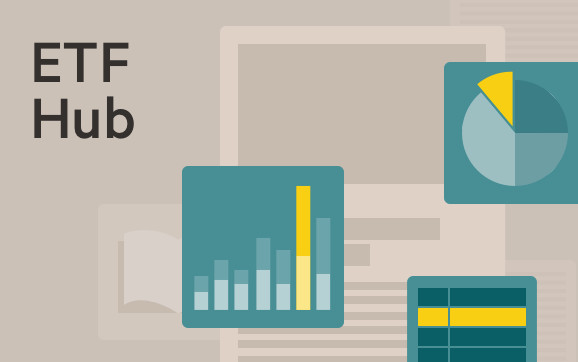Latest news on ETFs
Visit our ETF Hub to find out more and to explore our in-depth data and comparison tools
Bitcoin has been dubbed “digital gold” but the rapid growth of bitcoin exchange traded funds in the US has not driven outflows from gold ETFs, according to investment bank research.
As of March 14, bitcoin ETFs had vacuumed up a net $10.6bn year-to-date globally, even accounting for chunky outflows from the Grayscale Bitcoin Trust (GBTC), at $23.7bn still the world’s largest such vehicle, according to data from JPMorgan and Bloomberg.
The surge in demand, which followed the launch of the first “physical” spot bitcoin ETFs in the US, has coincided with sharp selling of gold ETFs, which bled $7.7bn over the same period, even as the gold price rose to an all-time high of $2,200 per troy ounce.
The divergent flows had led to claims that some investors are switching from real gold to “digital gold”, which is now a more accessible option for the “alternatives” slice of their portfolio, beside equities and bonds.
However, analysis by JPMorgan suggests this thesis is not true — while also potentially solving the mystery as to why gold has hit all-time highs despite net selling by ETF investors.
The data show that outflows from gold ETFs began in April 2022. Since then the selling has continued at a more or less even pace, which has not been accelerated by the emergence of US spot bitcoin ETFs. Around $46bn has been withdrawn over this period in total.

However, data from the World Gold Council show a far greater sum — $229bn between September 2020 and December 2023 — has been pumped into gold bars and coins by private investors.
In addition, central banks have mopped up a further $155bn of gold as the likes of the People’s Bank of China have increasingly favoured the metal for their foreign exchange reserves.
“This outflow trend [from gold ETFs] does not reflect an aversion to gold by private investors such as individuals and family offices but rather an instrument shift away from physical gold ETFs to bars and coins,” said Nikolaos Panigirtzoglou, global market strategist at JPMorgan.

Although the WGC data only run to the turn of the year, Panigirtzoglou said anecdotal evidence suggested that, if anything, demand for bars and coins had accelerated since January, despite the competition from spot bitcoin ETFs. He attributed the shift to behavioural changes triggered by the Covid pandemic.
“Privacy and tangibility have become a more important consideration for private investors since the pandemic and physical gold ETFs have a disadvantage in this respect relative to holding bars and coins. ETF transactions are recorded and their holdings are registered, thus lacking privacy and anonymity,” Panigirtzoglou said.
“In a hypothetical catastrophic scenario for which investors are trying to hedge by buying gold, holding a paper certificate of gold ownership via an ETF, subjected to counterparty risk, looks less attractive and less safe than tangible gold stored privately.”

As for central banks, in some cases at least, demand for physical gold is driven by a hunger for assets that are not at risk of Western sanctions or the mercy of custodial arrangements that Western governments can control.
JPMorgan’s analysis also suggests demand for bitcoin has not been as strong this year as a focus on ETFs alone would suggest — further undermining any gold-to-bitcoin narrative.
Although bitcoin ETFs have pulled in a net $10.6bn, since the start of the year investors have sold $6bn worth of bitcoin held directly on an exchange, according to figures compiled by crypto data company Messari.
“[The money] flowing into the newly created spot bitcoin ETFs does not necessarily reflect fresh money entering the crypto space, but is mostly a rotational shift from digital wallets previously held by retail investors with exchanges or retail brokers to the convenience and regulatory protection of the new spot bitcoin ETFs,” Panigirtzoglou said.
The rally in both gold and bitcoin also seems to have been driven by momentum traders such as commodity trading advisers, or CTAs, which have been strong buyers of futures contracts linked to both assets in recent months.
“Transparent flows in ETFs may make some believe that money is moving from gold ETFs to Bitcoin ETFs, but you have to look at all forms of investment in gold to see the full picture,” said Joe Cavatoni, market strategist at the World Gold Council.
“We continue to see central bank flows and OTC [over the counter] investment flows that are positive, signalling people are continuing to invest in gold.”
Bryan Armour, director of passive strategies research, North America at Morningstar, broadly agreed with the findings.
Latest news on ETFs

Visit the ETF Hub to find out more and to explore our in-depth data and comparison tools helping you to understand everything from performance to ESG ratings
“I’m sure there are a small contingent of investors who are shifting from gold to bitcoin, but in reality I don’t think that outflows from gold correlate with the introduction of bitcoin ETFs because any interaction between the two at the moment is limited and portfolios show that,” he said.
“The net demand for gold is actually increasing, just in the ETF structure that may not be the case,” added Armour.
Peter Sleep, senior portfolio manager at 7 Investment Management, concurred, saying “buyers of gold are [primarily] central banks and traditional buyers in emerging markets like China and India. I find it hard to believe they are buying bitcoin instead of gold.”
Nate Geraci, president of The ETF Store, also agreed with the findings but suggested the picture could change.
“There is a growing cohort of investors who view bitcoin as digital gold — particularly younger investors. It’s not unreasonable to think that spot bitcoin ETFs will siphon money away from gold ETFs moving forward,” he said.






